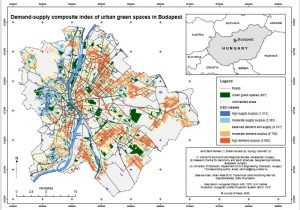The availability of green spaces for different socio-economic groups in cities: a case study of Budapest, Hungary
Abstract
The provision of urban green spaces (UGS) within a reasonable walking distance/time for each resident has become a major challenge of urban planning. We provide a novel method to map the availability of UGS for different socio-economic groups in cities using a demand–supply composite index (DSCI). Budapest, the capital city of Hungary, has been chosen to test how the DSCI works.  The results show significant differences in the availability of UGS for people living in different neighborhood types. Furthermore, findings reveal that regardless of which type of residential area is considered, young and middle-aged people with higher per capita income are more likely to access UGS. As the demographic and socio-economic structure of the population is continuously changing in the different neighborhood types and so is the demand for UGS, urban planners should carefully monitor societal changes and elaborate interventions to help improve the availability and accessibility of UGS.
The results show significant differences in the availability of UGS for people living in different neighborhood types. Furthermore, findings reveal that regardless of which type of residential area is considered, young and middle-aged people with higher per capita income are more likely to access UGS. As the demographic and socio-economic structure of the population is continuously changing in the different neighborhood types and so is the demand for UGS, urban planners should carefully monitor societal changes and elaborate interventions to help improve the availability and accessibility of UGS.
Keywords: urban green spaces, availability, walking distance, demand and supply, urban planning, Budapest


